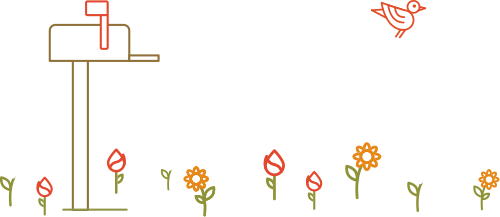How To Cook Dried Beans Using A Pressure Cooker
I am not a vegetarian, but for convenience, financial and health reasons I do not cook a lot of meat. Consequently my dietary protein comes from many different sources, not the least of which is beans.
I realize that many of you have preconceived notions of beans and what goes along with eating them, but I am going to ask you to keep your mind open until I finish my explanation. If you read all the way to the bottom, you are more than welcome to unleash your fury in my comments section.
Let me begin by stating that I am not talking about canned kidney beans. I do not eat beans from a can unless I am desperately short on time. Not that there is anything wrong with canned beans: they are quick, healthy and relatively inexpensive. However, I have found canned beans to be very one dimensional in flavor and even less appealing in texture. They are also more prone to cause the digestive problems many people associate with “the musical fruit.”
Dried Beans
A little over a year ago my apartment acquired a pressure cooker that opened my eyes to the potential of dried beans. Dried beans, which are even less expensive than canned beans, can take hours to cook under normal circumstances. But a pressure cooker can cut this time to under half an hour and allows you to prepare large batches that can be stored frozen for months.
In my estimation, however, the best reasons to cook your own beans are taste, texture and variety. Home cooked beans taste worlds better than canned. First off, they do not have the characteristic slimy ooze of canned beans. (Definitely rinse your beans if you do buy canned). Dried beans also have a richer, more complex flavor without the metallic tinge you get with S&W. (Hint: Your beans will taste even more delicious when cooked in bouillon or broth.)
The mouthfeel of home cooked beans is also superior to canned. Different varietals have unique tastes and textures, so with each bean you try you embark on a new adventure. Some are silky and delicate, others rich and creamy. Larger beans tend to be heartier than smaller beans, but there is really no telling how they will taste until after you cook them.
While there are only five or six kinds of canned beans commonly available, the number of dried beans is innumerable. Rancho Gordo is an heirloom bean vendor I visit regularly at the San Francisco Ferry Plaza Farmers Market that has a fantastic variety of dried beans. Ever had a Black Calypso bean? Me neither, but I cannot wait to try them! Visit the Rancho Gordo website if you want to order online.
There are also fantastic bean selections at most health food stores, including Whole Foods. Check the bulk bins for the best deals.
Soaking Beans
One caveat of cooking your own beans is that they require a significant amount of soaking time. I recommended that you rinse them well and soak them overnight. All this requires is 5 minutes of planning the day before, and if you prepare large batches you do not have to soak beans very often. Be sure to pick over your beans for pebbles before cooking them.
Another bonus of rinsing and soaking beans is that it eliminates many of the sugars that your body cannot digest, thereby reducing (in my experience eliminating) unpleasant bodily byproducts. Toss out your soaking water when you are finished and add fresh water or broth for cooking.
Pressure Cooker Precautions
Pressure cookers can be dangerous if used improperly, so it is imperative that you follow the instructions carefully. In general, it is important to get a tight seal on the lid and be sure the pot is not over-filled (total volume should be less than half the volume of the pot). However, it is necessary to add sufficient liquid to the beans to prevent burning and dehydration. You also want to avoid adding salt until after your beans have cooked.
Follow the instructions on your pressure cooker to determine the appropriate amount of cooking time, usually 10-20 minutes. The contents of the pot are under a tremendous amount of pressure while cooking, so be sure to allow the pot to depressurize completely before attempting to remove the lid. This takes an additional 10-15 minutes.
Here is the pressure cooker I use.
I imagine that a slow cooker would be equally advantageous in cooking beans, but I have never tried it.
What are your favorite tricks to make beans more user friendly?




 Health
Health Habits
Habits Food
Food Weight
Weight 



 Better Than Butternut: Roasted Delicata Squash Recipe
Better Than Butternut: Roasted Delicata Squash Recipe 10 Simple Ways To Eat Less Without Noticing
10 Simple Ways To Eat Less Without Noticing Juicing: Stupid and Pretentious or Nourishing and Enlightening?
Juicing: Stupid and Pretentious or Nourishing and Enlightening? 10 Tasty Carbs That Won’t Make You Fat
10 Tasty Carbs That Won’t Make You Fat How To Start Working Out When You Don’t Like To Exercise
How To Start Working Out When You Don’t Like To Exercise
 Focus More on Your Brain and Less on Your Diet if You’re Serious About Losing Weight
Focus More on Your Brain and Less on Your Diet if You’re Serious About Losing Weight Home Court Habits: The Secret to Effortless Weight Control
Home Court Habits: The Secret to Effortless Weight Control 10 Reasons You Aren’t Losing Weight When You Think You’re Doing Everything Right
10 Reasons You Aren’t Losing Weight When You Think You’re Doing Everything Right How To Burn More Calories Without Breaking A Sweat
How To Burn More Calories Without Breaking A Sweat The 7 Habits of Highly Effective Foodists
The 7 Habits of Highly Effective Foodists









